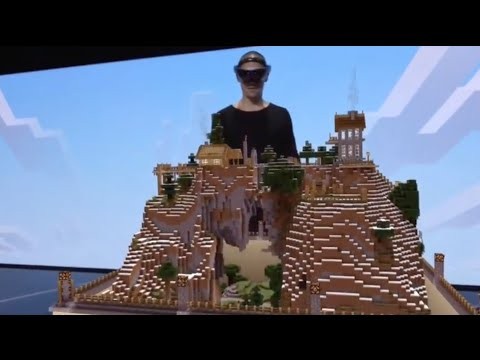Experts disagree on the definitions of virtual, augmented and mixed realities. Facebook is focusing on virtual reality (VR) with Oculus Rift; the development kit sells for $350. Google, with its Google Glass for example, and a number of other companies like IKEA have taken augmented reality (AR) further.
SummaryWhat is Augmented Reality?What is Virtual Reality?Mixed Reality:A Reality Ahead of VR and ARConclusionMicrosoft has entered this market with a twist it calls mixed reality (MR). Microsoft's MR Development Kit (DK2) goes for a whopping $3000.
Yes, VR, AR and MR have defining differences. However, they all have one goal in common:to provide you with 3D Computer Generated Imagery (CGI) or 3D Video/Live Imagery experiences. They want you, the user, to feel and experience the computer generated images or 3D videos/images as real – hence the use of the word reality . Virtual reality, augmented reality and mixed reality – these are all simulated realities.
What makes AR, VR and MR different from each other? Let's examine each of these realities.
Augmented reality differs from VR in that you are not lost in an environment that is far from your immediate surroundings. Virtual reality, on the other hand, is an immersive virtual experience away from your immediate surroundings (more on that in a moment).
Think of Google glasses or IKEA's digital table that suggest recipes, for example. You may see text or images suspended in space along with all the other things you would see in your physical environment. For an idea of what AR can do, see the IKEA video below.
Virtual reality creates a simulation, and then you interact with that simulation as if it were real. In VR, you can experience a city without ever setting foot in it, all in your VR suite. You can also experience a synthetic world or event or a mixture of these worlds or events.
So in VR you can experience simulations of
For example, you can play a football game in virtual reality – that would be a synthetic event. Or you can watch a live broadcast of a football match at Manchester United as if you were there – a real event. Or add additional footage to your already live Manchester United football event to create a blended synthetic and real event.
Virtual reality completely immerses you in a world far removed from your immediate environment. You are transported to a place far from your immediate surroundings – a virtual world.
In 2015, Minecraft and Microsoft collaborated on a mixed reality game using the Microsoft HoloLens. The video below gives you an idea of how it worked.

Mixed reality, as the name suggests, is a mix of virtual and augmented realities. In augmented reality, you have no interaction with your computer-generated texts or images. You cannot change positions or alter other characteristics of what you see in an AR. Mixed Reality fixes that.
Mixed Reality is also known as Hybrid Reality. Microsoft's HoloLens is a good example of MR at work. When you experience mixed reality, you will find it hard to tell the difference between real reality and virtual reality – virtual objects occupy real space in real time and you can directly interact with these objects. /P>
Mixed reality is a mix of virtual reality and augmented reality. Unlike AR, MR allows users to directly interact with computer-generated simulations in real time instead of just experiencing static imagery and text. And unlike virtual reality, MR allows users to anchor and layer synthetic content into the physical world and have the two worlds interact. MR aims to improve real-time digital collaborations between teams and teammates and between users and their environment.